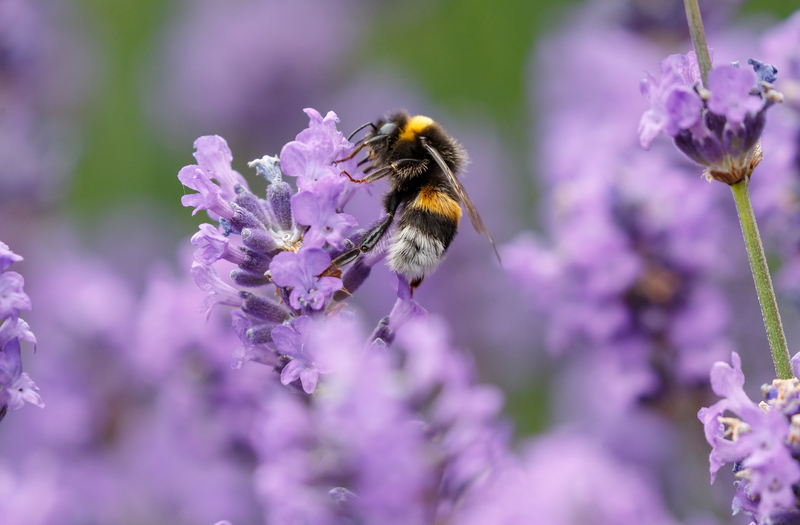Uncover the Climate Benefits of Personal Gardening
Posted on 29/06/2025
Uncover the Climate Benefits of Personal Gardening
Personal gardening has existed for centuries, yet its relevance in modern society has grown significantly due to its profound impact on the environment and climate. With escalating concerns around global warming and carbon emissions, more individuals are turning to their own backyards, balconies, and community plots as a practical, enjoyable way to make a difference. In this comprehensive guide, we'll explore the specific climate benefits of home gardening, break down the science behind these changes, and provide actionable insights for anyone hoping to nurture greener thumbs and a healthier planet.

How Personal Gardening Impacts Climate Change
Climate change continues to be a major global challenge. The biodiversity crisis, excessive fossil fuel use, and rapidly disappearing green spaces all contribute to environmental imbalance. Personal gardening may seem small-scale, but the cumulative effects are anything but negligible. Here's a closer look at exactly how small-scale gardening helps the climate:
1. Carbon Sequestration: Your Garden as a Carbon Sink
Plants naturally absorb carbon dioxide (CO2) from the atmosphere during photosynthesis. This process turns your garden into a "carbon sink," actively removing greenhouse gases from the air.
- Lawn alternatives like wildflower meadows and densely planted borders absorb significantly more CO2 than traditional lawns.
- Tree and shrub planting contribute long-term carbon storage, with mature trees capturing hundreds of kilograms of carbon in their lifetime.
- Compost-rich soils have an increased capacity for carbon sequestration, locking more organic carbon underground.
According to the National Wildlife Federation, a single mature tree can absorb over 48 pounds of carbon dioxide annually--now imagine the collective impact if every backyard contained a few trees!
2. Reducing Food Miles and Lowering Your Carbon Footprint
When you grow your own fruits and vegetables, you're effectively shrinking the distance food must travel before it reaches your plate. These "food miles" commonly involve:
- Extensive transportation, often by trucks, ships, or planes, which release greenhouse gases.
- Packaging materials that contribute to plastic pollution and require fossil fuels for production.
- Refrigeration and storage, consuming additional energy resources.
By harvesting homegrown produce, you actively cut emissions associated with commercial farming and global supply chains. The climate benefits of growing vegetables and fruits locally are twofold: you save on emissions and encourage fresher, healthier eating.
3. Enhancing Urban Biodiversity for Climate Resilience
Personal and urban gardens provide habitat for a wide range of species, from pollinators like bees and butterflies to birds and beneficial insects. Enhanced biodiversity leads to:
- Stronger ecosystem services, such as pest regulation and natural pollination.
- Resilience against climate shocks, such as flooding or extreme heat, as healthy ecosystems adapt more effectively.
- Natural cooling through increased greenery and plant transpiration.
These ecological connections reinforce the climate advantages of a home garden, especially in cities where green spaces counteract the "urban heat island" effect.
In-Depth: The Core Environmental Advantages of Home Gardening
I. Soil Health and Its Direct Influence on Carbon Drawdown
Good soil is a living, breathing ecosystem packed with microbes and organic matter. Well-managed garden soil can greatly improve carbon retention, especially when regularly amended with compost, mulch, or organic fertilizers. Healthy soil:
- Stores more carbon per square foot than degraded, bare earth.
- Reduces runoff, which helps prevent erosion and loss of precious topsoil.
- Enhances water retention, lowering the need for frequent irrigation--another energy saver.
Switching from heavy chemical fertilizers to organic matter further curbs emissions (since chemical fertilizers are energy-intensive in production and transport). So, building up your garden's soil organic content has direct, measurable climate benefits.
II. Supporting Native Species and Pollinators
Many modern landscapes feature monocultures or non-native grass lawns. By introducing native plants, heirloom vegetables, or wildflowers, personal gardeners create vital microhabitats for local wildlife:
- Native plants help protect endangered pollinator populations, key contributors to ecosystem health.
- More pollinators mean stronger food systems, both locally and globally.
- Diversity in plantings improves climate adaptability, encouraging species that thrive in varying conditions.
For those interested in maximizing the climate and environmental benefits of their home garden, adopting a "rewilding" approach can be particularly powerful.
III. Composting: The Circular, Low-Waste Lifestyle
Composting yard and kitchen scraps not only produces free, nutrient-rich soil amendments--it diverts organic matter from landfills, where it would otherwise generate methane, a potent greenhouse gas.
- Small-scale composting can reduce household waste by up to 30%.
- Compost improves soil's carbon-holding abilities.
- Less reliance on chemical fertilizers, which have a significant fossil fuel footprint.
As composting grows in popularity, the climate benefit of personal gardening increases proportionally. Plus, it's a sustainable practice easily adopted in both rural and urban settings.
IV. Rainwater Harvesting and Improved Water Management
Smart water management in personal gardening further lessens your climate impact:
- Rain barrels and cisterns capture storm runoff, reducing localized flooding and minimizing the urban "heat island" effect.
- Xeriscaping (using drought-tolerant plants) lowers reliance on energy-intensive municipal water supplies.
- Drip irrigation, mulching, and shade trees reduce evaporation and conserve moisture, making gardens even more sustainable.
Every gallon of water saved means less energy spent pumping and purifying water locally and regionally.
Additional Personal and Social Climate Benefits of Home Gardening
Community Strength and Environmental Awareness
Gardening is more than just a hobby--it's a gateway to community action and increased climate literacy:
- Community gardens foster social connection, break down barriers, and promote environmental stewardship among neighbors.
- Education initiatives around home gardening spread awareness of sustainability, multiplying positive climate impacts at a grassroots level.
- Neighborhood greening projects can reduce local violence, improve air quality, and enhance resilience to extreme climate events.
Mental and Physical Well-Being
A healthy mind and body are inextricably linked to a healthy planet. Home gardening:
- Encourages outdoor activity, reducing reliance on carbon-intensive entertainment and travel.
- Decreases stress, anxiety, and depression, enabling more optimistic, resilient communities capable of tackling climate challenges.
- Promotes balanced diets low in processed foods, reducing the environmental impact of food processing and distribution.
This holistic approach means that the climate advantages of personal gardening go far beyond just carbon emissions--they unite environmental and human well-being.
Actionable Tips to Maximize the Climate Benefits of Your Home Garden
1. Plant Native and Climate-Resilient Species
- Choose plants adapted to your local climate zone. They require less water, resist pests naturally, and thrive with minimal intervention.
- Incorporate trees and shrubs to maximize long-term carbon storage.
2. Practice Organic Gardening Methods
- Avoid synthetic pesticides and fertilizers-- these disrupt soil microbe activity and contribute to greenhouse gas emissions during production.
- Use compost and mulch to nourish your soil naturally.
3. Grow Your Own Food--Even in Small Spaces
- Balconies, patios, or window boxes are ideal for herbs, salad greens, and cherry tomatoes.
- Vertical gardening techniques multiply plantable space, perfect for urban dwellers.
4. Compost and Mulch Everything You Can
- Gather kitchen scraps, lawn clippings, and fall leaves for compost bins or heaps.
- Use finished compost and leaf mulch to protect and enrich garden beds, locking in carbon and nutrients.
5. Collect and Reuse Rainwater
- Install rain barrels or simple cisterns to capture roof runoff, reducing tap water use.
- Direct overflow to pollinator gardens or native hedgerows for added ecological benefit.

Frequently Asked Questions: Addressing Gardening and Climate Solutions
Q: Does a small home garden really make a measurable difference for climate change?
A: Absolutely! When aggregated across neighborhoods, towns, and cities, the climate benefits of backyard gardening become significant. Beyond carbon sequestration, home gardens help shift demand away from resource-intensive agriculture, increase local resilience, and boost biodiversity--each a vital piece in the larger climate puzzle.
Q: How can I garden sustainably in an apartment or with limited outdoor space?
A: Even a sunny windowsill offers climate-saving potential. Container gardening, vertical planters, and indoor composters enable apartment dwellers to grow food, support pollinators, and reduce waste. Joining a community garden is another powerful way to multiply your environmental impact.
Q: What are some easy plants to start with for a climate-positive garden?
A: Native wildflowers, culinary herbs (such as basil, mint, and chives), salad greens, and berry bushes are excellent beginner options. These species are resilient, low-maintenance, and offer high ecological value.
Conclusion: Every Garden Counts in the Fight Against Climate Change
At its core, personal gardening is a hands-on climate solution available to virtually everyone. Whether through increased carbon capture, reduced food miles, improved urban biodiversity, or stronger community ties, home and urban gardens deliver far-reaching benefits for both people and planet. As collective awareness grows, the combined efforts of millions of gardeners can tip the balance--helping, quite literally, to root out climate change one backyard at a time.
Are you ready to dig in and uncover the climate benefits of personal gardening? Take the next step: grab a spade, plant a seed, and become part of a global movement that's nurturing the Earth--one plot, pot, and harvest at a time.


